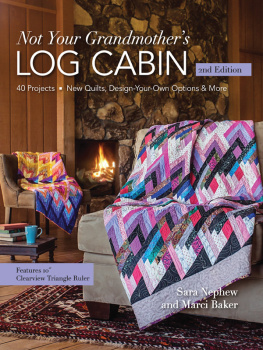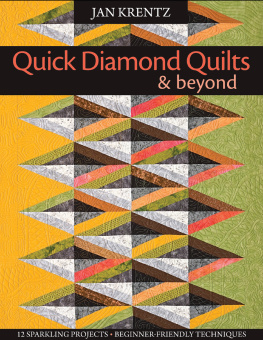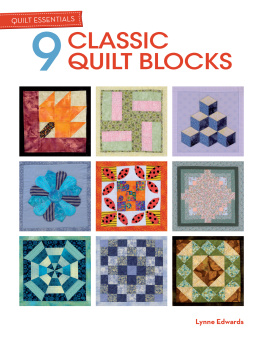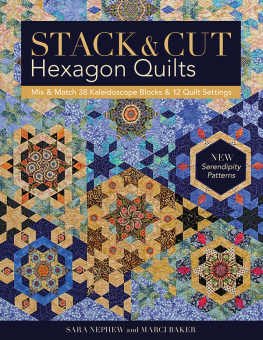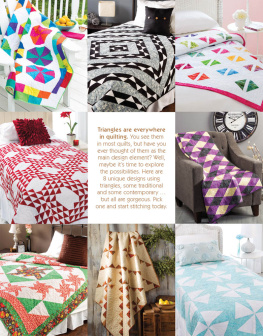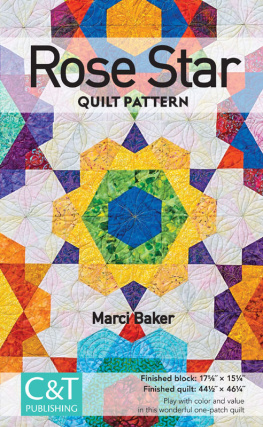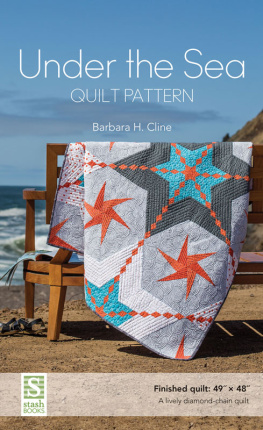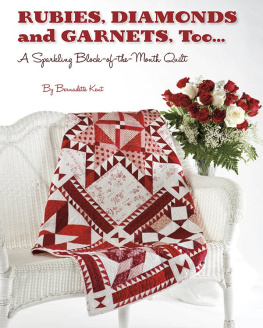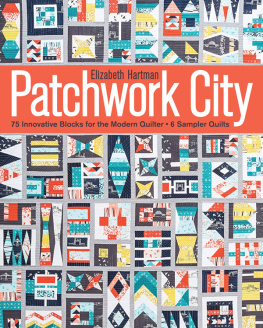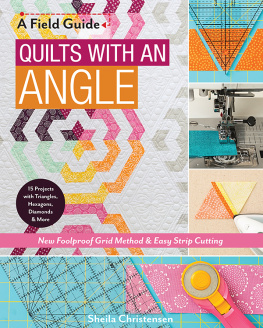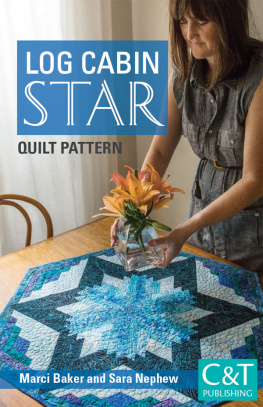Publisher: Amy Marson
Creative Director: Gailen Runge
Art Director / Cover Designer: Kristy Zacharias
Editor: Marci Baker
Technical Editor: Gailen Runge
Book Designer: April Mostek
Production Coordinator: Freesia Pearson Blizard
Production Editor: Joanna Burgarino
Photo Assistant: Sarah Frost
Cover photography by Nissa Brehmer
Quilt photography by Diane Pedersen
All other photography by Randy Pfizenmaier of Fusebox Studios (fuseboxstudio.com), except as noted
Published by C&T Publishing, Inc., P.O. Box 1456, Lafayette, CA 94549
Dedication
This book is dedicated to our fun and exciting collaboration!
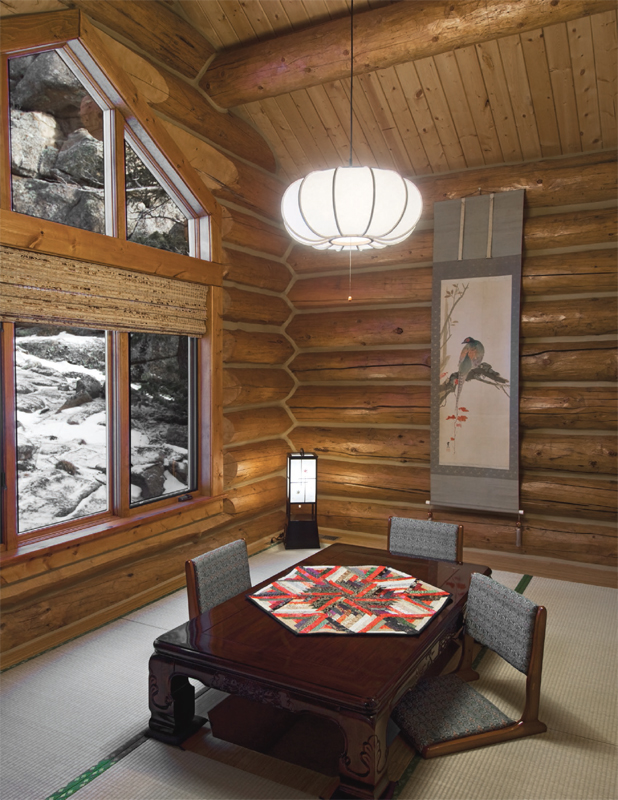
Saras Chrysanthemum piece fit right in with the Tatami room at the Butin log home. A perfect example of the elegance and variety possible with these Log Cabin designs.
Acknowledgments
With thanks from Sara: I am in awe at the generosity and demonstrated talent of all my very special pattern testers: Marci Baker, Janet Blazekovich, Joyce Lawrence Cambron, Diane Coombs, Bobbie Crosby, Joan Dawson, Linda DeGaeta, Martha Ethridge, Janet Goad, Scott Hansen, Juliette Hawley, Janice Jamison, Kathie Kryla, Elaine Muzichuk, Sarah Newman, Alicia Sanchez, Janice Schlieker, Terri Shinn, Kathleen Springer, Kathy Syring, Linda Tellesbo, and Bonnie Walker. The beauty of their work adds hugely to the value of this book.
Marci Baker, in addition, helped produce this book as publisher; as emotional support; and as special assistant tester, technical editor, and creator of the charts for fabric requirements. We always have fun to-gether. And thanks again to Kris Krischano, who reads the text first for mistakes. I need all the help I can get!
With thanks from Marci: Thank you to Susan Simono for her patience and organization, to Anita Hartinger for finding my words, to Mark Talbot for outstanding graphic design, and to Randy Pfizenmaier for making these quilts come to life in print. Many thanks to Bill and Linda Butin for their generosity in sharing their log home for the cover photo, especially during the holidays. Thank you to Dale Nephew for his heartfelt wisdom and sound advice throughout the project.
A special thank-you to my husband, Clint, and sons, Kevin and Marcus, for their patience, understanding, and catering when I worked long hours. As co-author and editor of this project, I am appreciative of Saras confidence and trust in my abilities to publish her incredible designs. She has given me an opportunity that has helped me grow and think outside the box. Lets do this again with your next set of designs!
Special thanks to these manufacturers:
Maywood Studio
Windham Fabrics
Fabric Freedom
Benartex
Quilters Dream Batting
Omnigrid
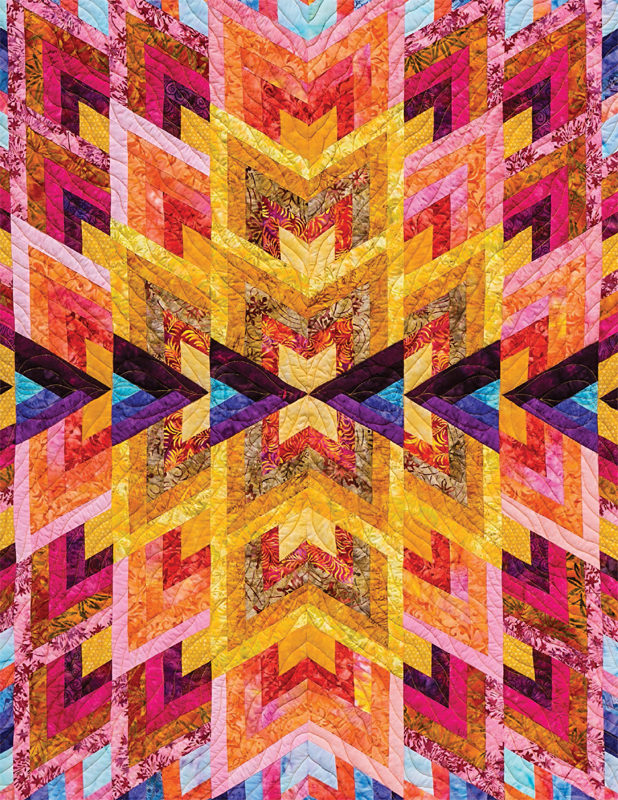
Preface
For many years, when I have given my lecture Quilts from the Clearview Triangle, which shows the many designs from all my books based on the equilateral triangle, I generally repeat to my audience that whatever you can do with squares, you can do with triangles. My husband has been listening to my lectures and he said, Then you need to do 60 Log Cabin quilts.
Actually, I had done Log Cabin quilts many years ago. It is how I got into these quilt designs in the first place. I was a beginning quilter, with a small stash of fabric, having fun trying designs and making quilts for my family and friends out of corduroy and clothing scraps. I was also taking classes and reading books.
Two of our three children were approaching high school age, and looking ahead to college we could see that we would have two students in college at the same time. Where would the money come from? Well, what if I made quilts to sell? Making and selling is what I had done as a jeweler and cloisonn artist, so it seemed natural to me to consider it in my new interestquilting.
I was playing with miniature (4) Log Cabin blocks, having lots of fun, and many people were offering to buy the resulting wallhangings. So thats what I started to make to sell. I cut 1 strips of cotton or wool, sewed them to a foundation of old sheeting to make the blocks, and arranged the blocks into the layout they looked best in. Eventually I made more than 60 of these wallhangings and sold most of them. By then I had baskets of 1 strips sitting around and was getting bored trying to think of what else I could do with those strips that would be fun. In my library was a book by Jeffrey Gutcheon called Diamond Patchwork, in which he showed how any quilt block could be drafted at a 60 angle, and the beautiful quilts his students made using this approach. So I decided to try a miniature Log Cabin 60 design, as shown here. I had some Plexiglas from a garage sale, and I used my husbands band saw to make a template for the foundation pieces of old sheet. When I had to set the Log Cabin diamonds together, it was difficult to deal with the bulk of fabric, doing a set-in. I thought, This would be so much easier if this were a triangle! The proverbial lightbulb came on in my head and the excitement began. I bought two 60 triangles from an office supply store, taped them together with clear packaging tape, and drew lines 1 apart from the base to the tip. The first Clearview Triangle ruler was born. I sewed strips together and used my ruler to cut triangles out and arrange them to make designs. It was so much fun!
I began learning how to work with fabric cut at a different angle and experimenting with all the designs flowing from this new approach. Stars, floral looks, even isometric 3-D designs took shape on my graph paper. Soon I began to write pattern books full of those designs. Moving on from the Log Cabin quilts was easy.
Thanks to those first Log Cabin quilts I became an author and began to travel and teach. I even started a business manufacturing my own isometric rulers so everyone could easily try the techniques I was having fun with. Then Clearview Triangle became a publishing company too. Who could have imagined all this would happen?
Nineteen books and 23 years later, I am back at the beginning, working with Log Cabin quilts again. After years of designing isometric quilts and teaching classes, my skills have grown. Now I can design 60 Log Cabin quilts without set-ins and without so much bulk. Here is a book filled with dozens of new quilts. I hope you like them as much as I do!


One of Saras first quilting projects, a wallhanging with 60 Log Cabin blocks
Photo by Sara Nephew
Introduction
Log Cabin is a traditional pattern that most quilters have tried at one time or another. The idea is simple. Start in the middle of the block with a square (usually redthis piece is the chimney in the center of the cabin and the red is the fire). Then add concentric strips to the square until you have the size you want your block to be. The design of the block changes depending on the order in which you sew the strips. Popular variations of the Log Cabin block are Courthouse Steps and Pineapple. The design of the quilt changes depending how you arrange the blocks. Many different arrangements are possible.
If you change to a 60-design Log Cabin, you can make both diamond and triangle blocks. And you can vary the strips within the blocks. And many beautiful quilts are the result. Page through the projects section or look at the visual index to find your favorites. This book is organized with general directions for making and assembling the blocks first. You will want to check out this section before you start your chosen quilt. Learn how to cut the shapes you need and pick up the tips that will make the process more enjoyable, such as how to use the charts and diagrams. You will find the designs arranged alphabetically. A few borders are at the back of the book. All these have been included to help you build your own Log Cabin easily.
Next page
